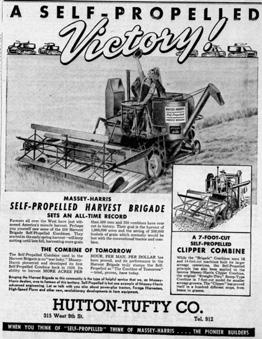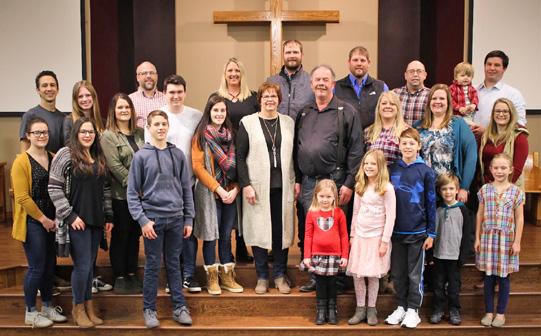
1 minute read
Primebank
A combiner typically charged harvest customers 25 cents per bushel; harvesters who charged by the acre were paid two to three dollars per acre harvested. The harvesters made their payments, the growers were satisfied, and the bountiful crops were harvested. Each of the five hundred red combines bore a sign declaring, “Massey-Harris Self-Propelled Harvest Brigade, Brigade-Proved…in the famous Million Acre Harvest Brigade.” The self-propelled combine had come onto the market in the late 1930s. Its precursor, the pull-type combine, required a tractor for locomotion; tractors had to be heavy enough to pull plows and that required considerably more gas than a self-propelled combine. Although the combine was only used for harvest it could be fitted for various crops from wheat to beet and carrot seeds, beans and peas depending on the area of the country. At the conclusion of the Harvest Brigade, it was estimated that 500,000 gallons of gas was saved compared to what would have been used with tractors and pull-types. Because the combines could be driven faster and were more efficient resulting in a cleaner, more complete harvest, it was calculated that 365,000 man-hours were economized and a better yield was produced. Among the members of the Harvest Brigade was Alfred Seder, a farmer near Oral, South Dakota. Given extra gas ration coupons to use during harvest, he was able to combine the required 2,000 acres in the area of Fall River County where he lived. In 1944 the area was dryland farm and wheat country, giving him ample acres. For others, the Harvest Brigade was when the

Advertisement



REC linemen.
Massey-Harris made good promotional use of the Harvest Brigade in its advertising. From the Sioux Falls Argus Leader, Aug. 25, 1944, via newspapers.com.
Business & Agricultural Financing We're Here to Help!
Primebank will work with you to build a fi nancial structure that supports your cash fl ow and growth objectives.
Le Mars 712.546.4175 Sioux Center 712.722.4545 Sioux City Sunnybrook Dr: 712.224.5400 Hamilton Blvd: 712.224.4777










